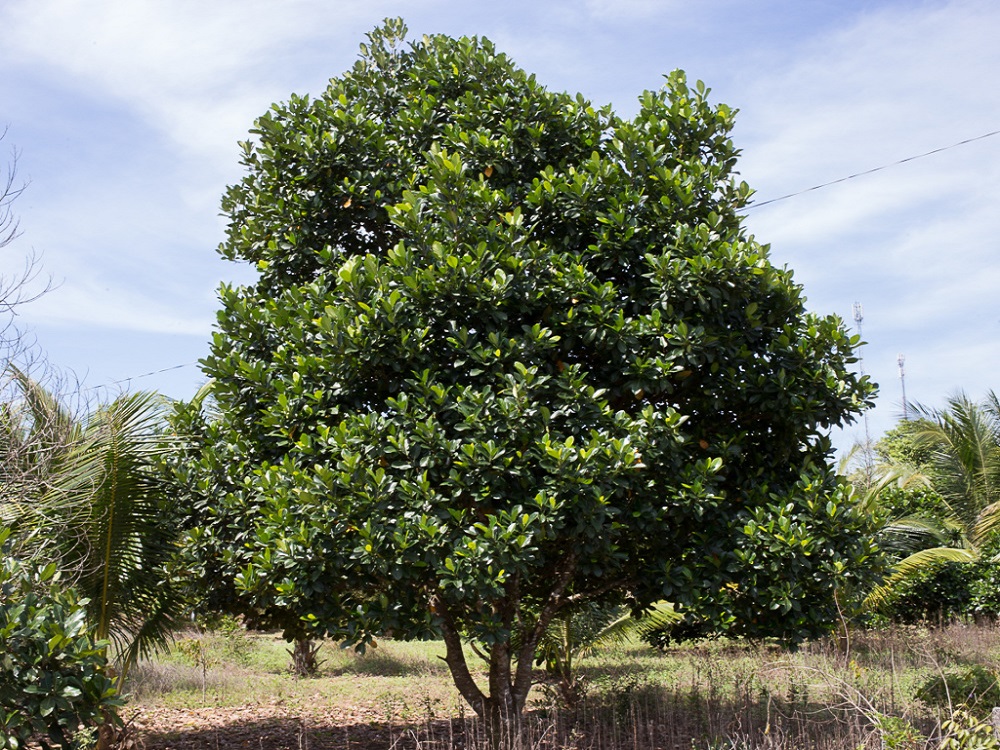Phanas - Jackfruit Tree

Artocarpus heterophyllus
Summary
Scientific Classification
Kingdom: Plantae
Division: Magnoliophyta
Class: Dicotyledonae
Order: Urticales
Family: Moraceae
Genus: Artocarpus
Species: A.heterophyllus
Scientific Name: Artocarpus heterophyllusauct. Non L.f.
Common names
English : Jackfruit, Jackfruit tree.
Hindi: Katahal, Kathal.
Kannada: Halasina hannu.
Marathi: Phanas.
Discription
- Habit and Habitat: Jackfruit is a tree which is unique in the fact that it produced huge fruits directly from its stem. A large medium-sized evergreen tree with a short trunk and a dense rounded crown of leaves.
- Distribution: Jackfruit is most probably native of the rain-forests of the Western Ghats.The jackfruit is most probably indigenous to (and in the past grew wild in) the rain forests of the Western Ghats, India. Since time immemorial it has been cultivated; it was introduced and became naturalized in many parts of the tropics, particularly in the South-East Asian region.
- Morphology:
Stem: Thick dark brown and rough.
Leaf: Simple, alternate, stipulate, petiolate, thick, dark green, leathery, elliptic to obovate, acute tip.
Inflorescence: Inflorescences solitary, borne axillary on special lateral, short leafy shoots arising from older branches and main trunk.
Flower: Male and female flowers are borne separately but on the same plant (tree) from the tip of the branches or from the trunk.
Androecium: Male flowers have tubular calyx, apically 2-lobed, pubescent; filament straight in bud; anther ellipsoid.
Gynoecium: Female flowers have tubular, hairy calyx, apically lobed with 1-celled ovary.
Fruit: It is a multiple aggregate type. It has a green to yellow-green exterior rind. The hard outer covering is derived from the enlarged female flowers. The whitish fibrous pulp within contains many seeds (as many as 500 per fruit).Pale yellow when young, yellowish brown when mature, ellipsoid, globose, or irregularly shaped, with stiff hexagonal tubercles and thick hairs. Inside this compound fruit, there are many true fruits - each consists of a large fleshy, yellow, aril-like perianth (pulp) having a seedwinge.
Seeds: Smooth, ovoid, reniform.
Flowering and Fruiting time: from March to June, April to September, orJune to August, depending on the climatic region, with some off-season crops from September to December, or a few fruits at other times of the year. - Propagation: can easily grow under tropical conditions in almost all types of soil. Propagation by vegetative methods.
- Importance:
a.The ripe fruit may be eaten raw.
b.Unripe fruits are also used as vegetable and for making pickles.
c.Timber is used for making furniture and musical instruments.
d.Heartwood yields a yellow dye.
e.The bark is used for tanning and the leaves are eaten by cattle.
f.The fruits are also relished by the elephants. - Location: Front yard of Chemistry staffroom, New building area, Office area.
 Trees of GSS Project supported by Makerspace Belgaum Website concept and designe by
Trees of GSS Project supported by Makerspace Belgaum Website concept and designe by